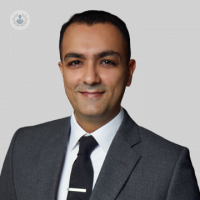Smile Designing with Ceramic Veneers: What is involved in the process?
Written by:Smile design is a state-of-the-art technique in cosmetic dentistry that allows a patient to virtually see the final result (that is, their dental smile) - before having started the treatment itself.
Here to provide a detailed insight into smile design with the use of ceramic veneers (thin laminates of ceramic placed on the surface of teeth) is Dr Shravan Chawla, renowned aesthetic, biomimetic and restorative dentist.

What is smile design?
Smile design, or a smile makeover, is a process by which minimally invasive techniques are used to, first visualise, and then deliver an enhanced and more symmetrical smile.
This is achieved with the help of a combination of treatments available, such as aligners, teeth whitening, composite bonding, composite veneers, and ceramic veneers.
What is involved in smile design?
The process first involves a thorough discussion to understand the patient’s needs and expectations, followed by detailed photography and planning. We then create a digital simulation of what the new smile could look like.
After this, a temporary smile is created in the patient’s mouth without any drilling or injections. This is followed by photographs of the mouth, to compare the smile design plan with the pre-operative look.
Only after the patient agrees and approves the smile, do we copy the smile into ceramic, and proceed with the case. The beauty of this work flow is that there is no invasive work done until the patient approves the dental look.
How long do ceramic veneers last for?
Evidence suggests that the life span of ceramic veneers is between 10 - 12 years. Having said this, if regular reviews and follow-ups are maintained, and gum health is good, some ceramic veneers can outlast this.
Ceramic veneers do not stain with foods as much as composite veneers and are also colour stable throughout their entire life span.
What are the disadvantages of ceramic veneers? Are they worth getting?
The only drawback for ceramic veneers is that each case requires meticulous planning (one to two weeks) before execution. Unlike composite veneers that are done by a dentist in the mouth, ceramic veneers are made by a master ceramist in a laboratory, considered somewhat of an art form. For this reason, ceramic veneers take more time to fabricate and deliver, usually between two to three weeks.
With ceramic veneers, the patient has the opportunity to modify and tweak the shapes and the shades of the veneers during the trial phase, before these are permanently cemented onto the teeth. For example, this can involve incorporating characteristics such as texture, shade, colour and translucency into the ceramic veneer, to produce a more natural appearance that is hard to replicate with composite bonding.
Ceramic veneers are worth considering for patients who:
- Wish to permanently improve the overall look of their smile, for appearance and/or self-esteem
- Struggle maintaining prolonged aligner treatment
- Have existing dentistry in their smile which is failing or is not aesthetic in appearance.
In my case, the majority of my patients are either re-do cases or repeated aesthetic makeover cases of failing/old dentistry within the smile window.
How should patients take care of teeth that have undergone the smile makeover/ ceramic veneer procedure?
All patients are advised to wear a night guard every night after the procedure, which is a soft silicone guard that is customised to fit and protect the teeth and prevent any damage from grinding.
Regular follow up check-ups, hygiene appointments, as well as reviews, can go a long way to ensure that the ceramic veneers and the gums are healthy.
If you are considering smile design with ceramic veneers and wish to consult your options, do not hesitate to visit Dr Chawla’s Top Doctors profile today.


